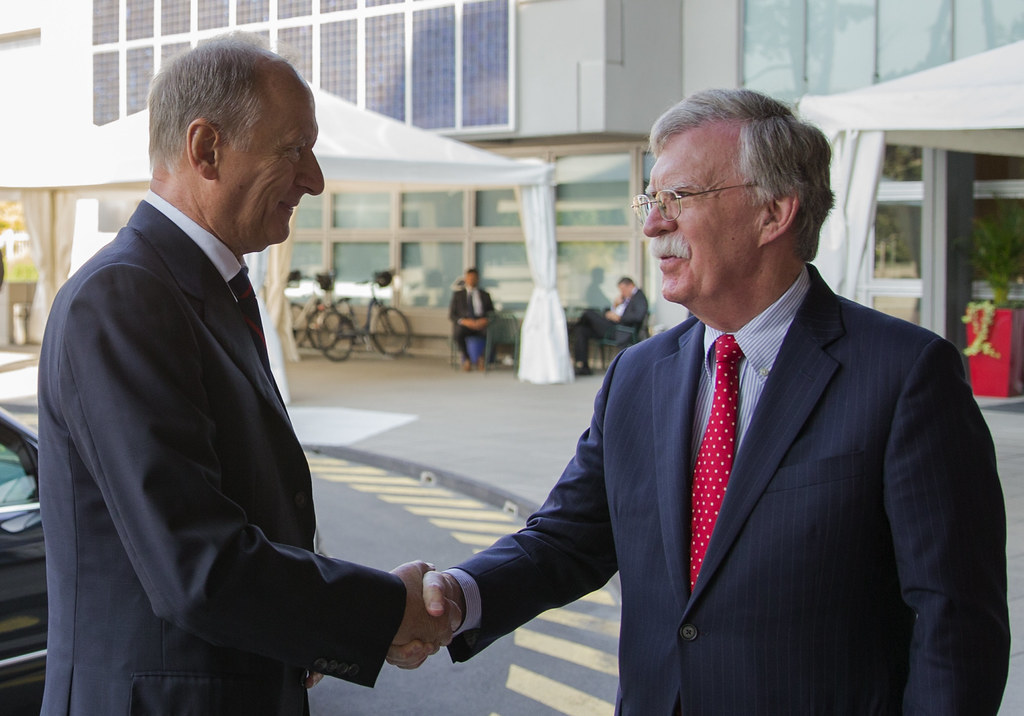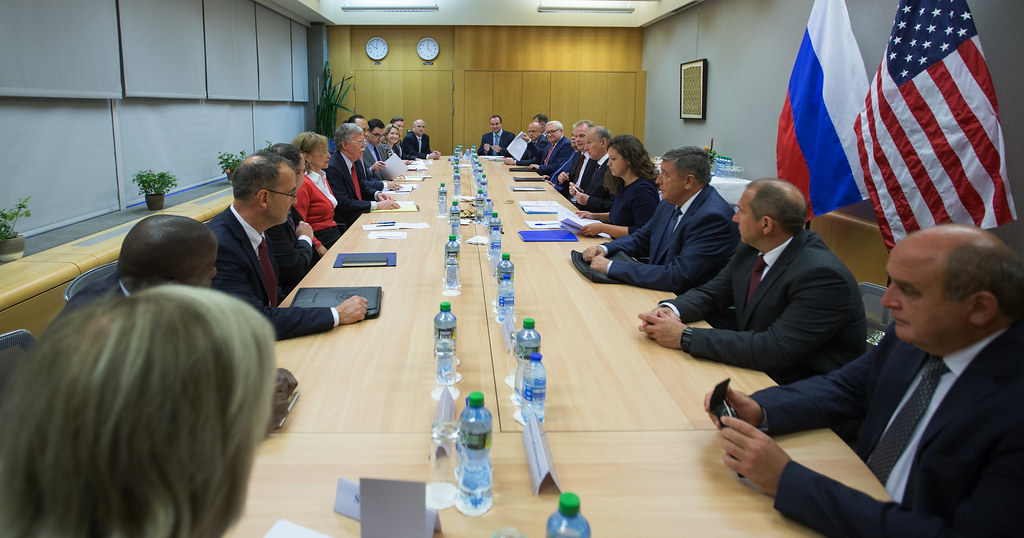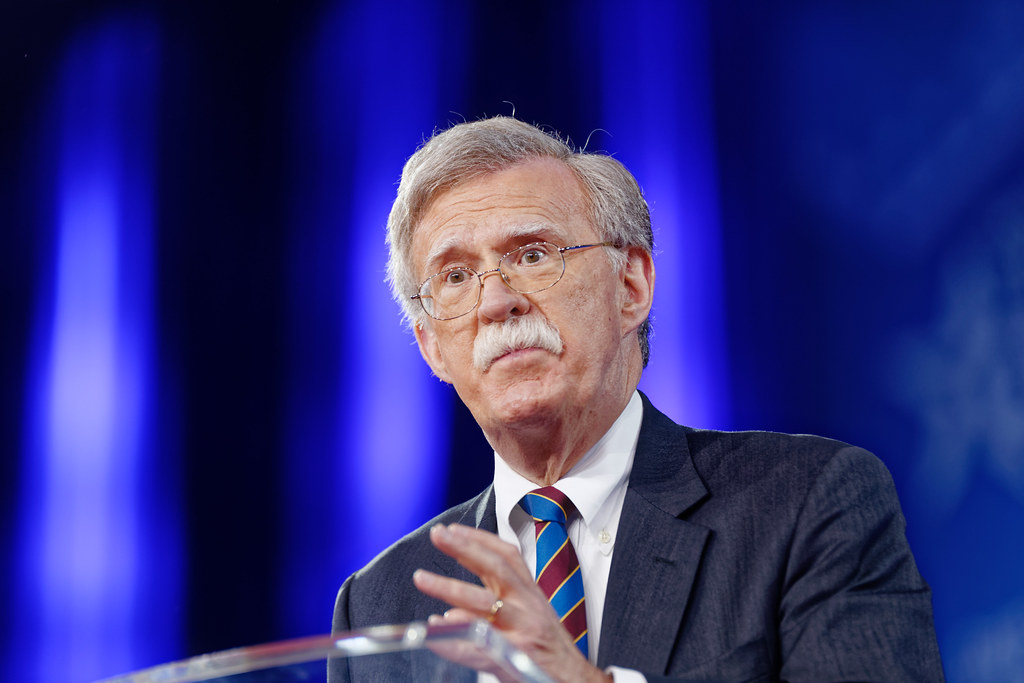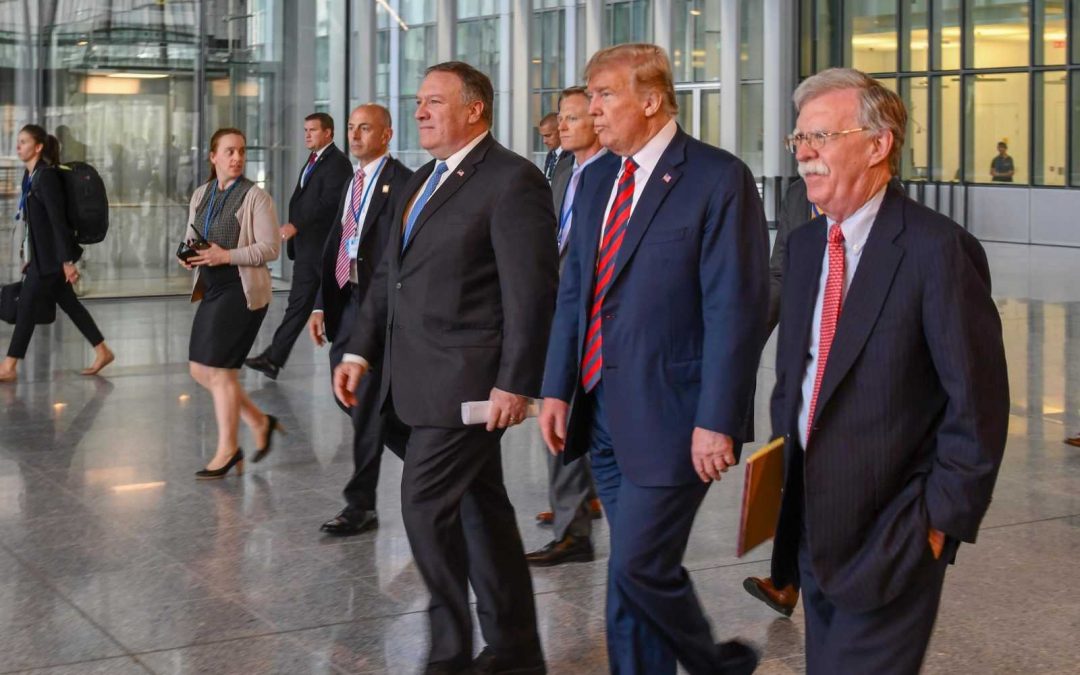Prabir Purkayastha
Vice-President | Free Software Movement of IndiaEditor’s N
Roger Kotila, Ph.D
President, Democratic World Federalists
WITH President Trump’s announcement of the US withdrawal from the Intermediate-range Nuclear Forces (INF) Treaty, the US is now set to dismantle the entire architecture of nuclear disarmament worked out between the US and the Soviet Union in the 80’s. In 2002, under George Bush, the US walked out of the Anti Ballistic Missile (ABM) Treaty. It is now pulling out of the landmark INF Treaty struck between Reagan and Gorbachev in 1987 that dismantled over 2,700 nuclear-tipped missiles.
The Trump administration has also indicated that it will leave or abandon the 2010 New Strategic Arms Reduction Treaty (START) that limits the number of nuclear warheads, the only remaining nuclear arms control treaty now in place. The New START, if not extended, ends in 2021.
Taking a wrecking ball to all the nuclear restraint regimes, or partial disarmament


THE SAN FRANCISCO PROMISE
Click to Learn More
Of
For each of these cases, the US has either given some weak arguments, as in the ABM or the INF Treaty; or simply announced as in the Iran case, that it was a bad deal struck by the previous administration, and the US would no longer abide by it. It is only when we see the overall picture, we understand that the US is now seeking to unilaterally impose its view of the world – the US as the supreme power, and all others as subordinate ones. That is why the need to dismantle the entire nuclear arms control regimes that accept that wars between
The INF Treaty applies only to land-based missile systems, and not to equivalent air or
What are the reasons advanced for the US pulling out of the INF Treaty? In 2014, the US claimed that they have “highly sensitive information and sources and methods,” which indicate that Russia has tested and deployed a missile that exceeds the 500 km range of the INF Treaty. The missile, which it identified subsequently, was the 9M729 ground-launched Novator cruise missile.
The Russians have rejected this
In turn, the Russians have not only rejected the US charges, they have charged that the Aegis system the US has installed in Romania, and now installing in Poland, have MK41 missile launchers that can also fire land-based Tomahawk cruise missiles of 1250-2,500 km range and
The US Navy, in its fact sheet, states that the sea-based Aegis MK41 batteries can fire both anti-missile and Tomahawk cruise missiles. The US argument has been that the electronics and the software for the land and
Without getting into details of the charges and

Donate


Become a Member
By Becoming a member of the DWF, you help to keep us by running our basic operations and promoting our ideas.

The question that the US refuses to answer
Without any reason being advanced for why the US decided not to go through the disputes settlement process, it strengthens the belief that the claims regarding the Novator missile are only a fig leaf. The intention was to walk out of this treaty. In the US view, the INF Treaty is a Cold War relic and does not serve its purpose anymore.
If Russia is indeed violating the INF Treaty, the countries most concerned should be the European countries. They are the ones under the Russian land-based missiles range, and would also have to host such US missiles. None of the European partners of the US have openly voiced their complaint of Russian “violations”, nor have they agreed or asked for a deployment of US land-based cruise missile deployment in the INF range on their soil.
A new argument being advanced is that the Chinese have been increasing its deployment and stockpile of INF missiles. As they – like the UK and French – are not under the INF Treaty, these missiles pose a threat to the US and its allies in East and South East Asia. Michael Krepon, a policy expert and a commentator, writing in the Armscontrolwonk.com blog, states, “Highlighting the China angle for exiting the INF Treaty is new.”
The total number of Chinese nuclear warheads including INF missiles is 280 (Chinese Nuclear Forces, Hans Christenson, Robert Norris, Bulletin of the Atomic Scientists, Vol 74, Issue 4, 2018). This includes air, sea
In any case, the number of Chinese weapons are so small, compared to the existing arsenal of the US – 6,450 and Russia – 6850, it is difficult to find much sympathy with the US analysts who feel deeply threatened by China with its small arsenal of nuclear weapons, and therefore their need to increase the US stockpile of 6,450 weapons further. China remains a red herring in this discussion. In any case, neither
The key issue is the US desire to return to the 90’s status of the world’s sole hegemon. With trade and land wars failing to achieve this purpose, the US is back to its belief of a “winnable” nuclear war. Back to the future; or the Strangelovian doctrine, “How I Started to Stop Worrying and Love the Bomb”.
Original Publisher
People's DemocracyPrabir Purkayastha is an engineer and a science activist in the power, telecom and software sectors. He is a founding member of the Delhi Science Forum as well as the founder of an online video news network Newsclick.

